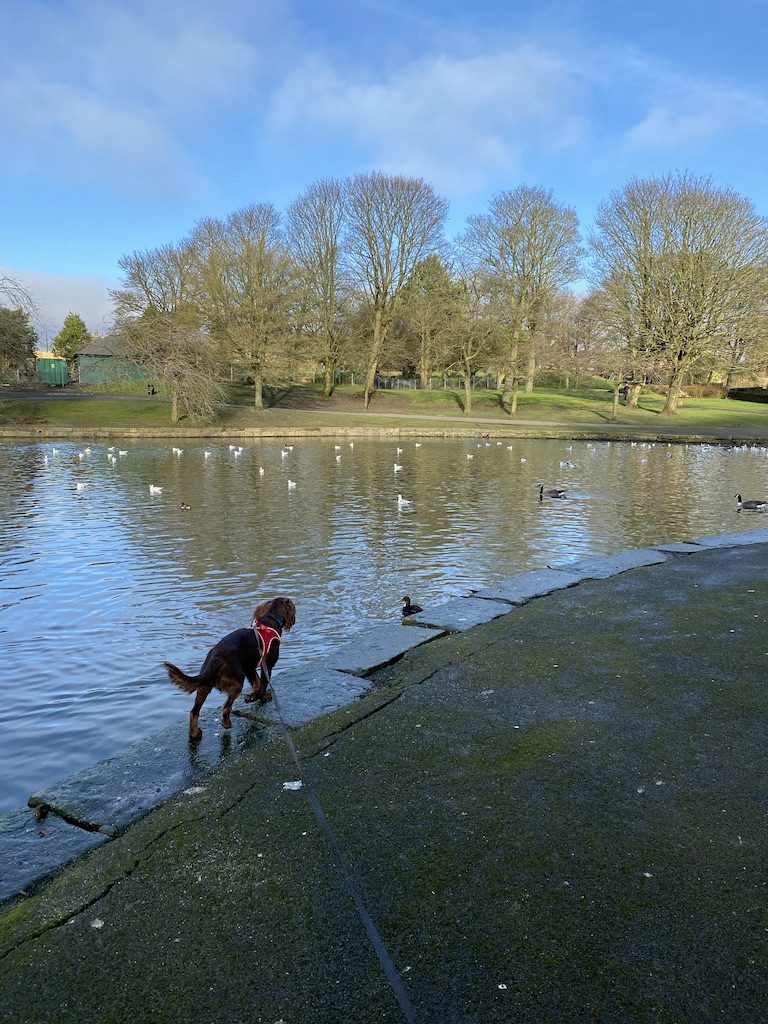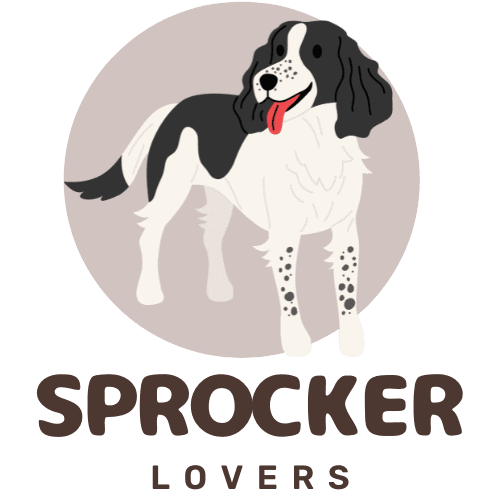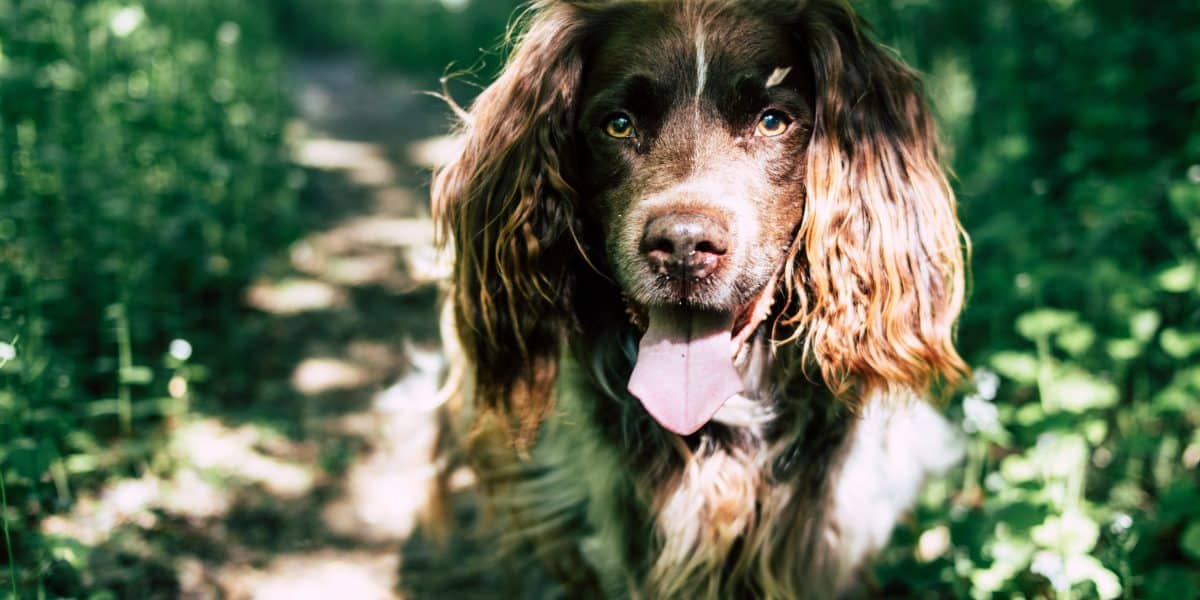Thinking of taking your dog running?
It’s a great activity to do with your four-legged friends. Not only can it help them stay lean and burn off some fat, but running with your dog helps to build a bond with them.
It gives them chance to escape the day-to-day environment of their house, and go on a fun and exciting adventure with their best friend.
But if you’ve got a Spaniel, you’re probably questioning…
This post contains affiliate links. Please read my full disclosure here.
Are Spaniels good running partners?
The short answer is yes.
Spaniel breeds–including Cockers, Sprockers, and Springers–are all superb running partners because of their energetic personalities.
Spaniels have a history of being working dogs. They were outside retrieving things all day long, hence why their energy levels are extremely high. They need lots of daily exercise, alongside tons of mental stimulation, to live happily in a home environment.
Spaniels make great running partners because they’re fast and agile, too. If well-trained to walk on a lead, they can run beside you at most paces.
(If not, and they haven’t mastered impulse control, they might head in the direction of a squirrel.)
Running with any dog takes some basic training–and that includes Spaniels. You’ll need to build a bond with your dog before taking them running to make sure they want to be around you… not run off chasing a leaf blowing down the street.
That being said, here are few things to consider when taking a Spaniel running.

1. Don’t run with them when they’re too young
Did you know that a dog’s bones and joints aren’t fully formed until they’re around a year old?
Taking your dog out running too early in their life could cause issues later down the line. That’s because running puts excess pressure on their under-developed joints and bones. Too much strain might cause health issues like bone deformaties or weak bones later in life.
As a general rule, don’t take your Spaniel running until they’re at least 12 months old. This is when their growth plates are closed, and bones are strong enough to take the impact of a run.
2. Build up running distances slowly
Wondering how far can you run with your Spaniel?
After all, you wouldn’t like to be forced on 10km run if you’re brand new to running. Your Spaniel probably feels the same.
It’s smart to build up your dog’s running distance slowly. A great place to start is with a month of 10-minute runs. You’ll get them used to running by your side, and help build a baseline fitness level before you start getting more adventurous with your runs.
Continue to build up your 10 minute intervals every month. That way, you’re not forcing them into a long run you’ve got no idea whether they can (or will want to) do.
3. Get the proper running equipment
There’s nothing worse than leaving the house on a run and realising it’s a harder to manage than you initially thought.
The secret to stress-free running with your Spaniel is to have the right equipment, such as:
- A running belt with pockets for poop bags, treats, and your mobile phone
- A hands-free lead to connect to your running belt
- A comfy harness for your dog (we love Perfect Fit because it doesn’t restrict their shoulders)
- A collapsable water bottle to keep them hydrated

4. Leave an hour either side of the run before feeding
Should I feed my dog before or after a run? That’s a question lots of dog owners ask.
It’s an important thing to consider, too. Exercise on a full stomach can cause bloat–a potentially fatal issue that can happen if a dog’s stomach twists too much whilst being full from food.
It’s best to leave an hour each side of the run before feeding your dog.
That way, they’ve got time to digest most of their meal before heading out for a run. They’ve also got an hour afterwards to let their stomach settle and their bodies to relax.
Related Post: What is the Best Food for Spaniels?
5. Pick your running route carefully
Running with your dog isn’t as simple as heading out the door and seeing where your feet take you.
Your dog’s running route should take four major things into consideration:
- Weather: As a general rule, ditch the run when temperatures exceed 15 degrees. You don’t want your Spaniel to overheat and get sick because they’ve been running around too much in high temperatures. Even then, think about a running route that has some shade from hot sun.
- Terrain: It’s better for your dog’s joints (and your own!) to run on grass, as opposed pavements or roads.
- Distractions: Does your Spaniel find it hard to concentrate around other dogs? It’s sensible to avoid the park. Similarly, if they get distracted by big open fields where they can run around as they please, sticking to a path might encourage them to stay closer to you.
- Time of day: If it’s dark outside (like early morning or in the evening), plan your run on well-lit routes such as streets or roads. Also consider getting a high-vis dog jacket so you can see them at all times.
6. Know when to stop
Spaniels love running–but they don’t always know when to stop.
Not only should you take plenty of water on your dog’s run, but knowing when to stop is just as key. Over-doing it, and forcing your dog to run when they’re too tired (or just don’t want to) isn’t healthy for them.
Your dog might run and run until they physically collapse. It’s your job to stop the run way before that exhaustion happens. It won’t be enjoyable for your dog to run when they’re past their limit. So, cut the run short whenever you see signs your dog wants to stop running, like:
- Reluctance to walk/run
- Excessive panting
- Confusion
- Stiffness
Running with your Spaniel is a superb bonding activity
There’s no doubt that Spaniels make perfect running partners. However, it’s not as simple as grabbing their lead and running off into the sunset together.
Make sure your pup has some basic obedience training so they can actually run beside you.
Then, grab the right equipment, take some water, and plan your route so that your dog’s limits aren’t met. Remember: you want it to be enjoyable for them, as well as yourself!


